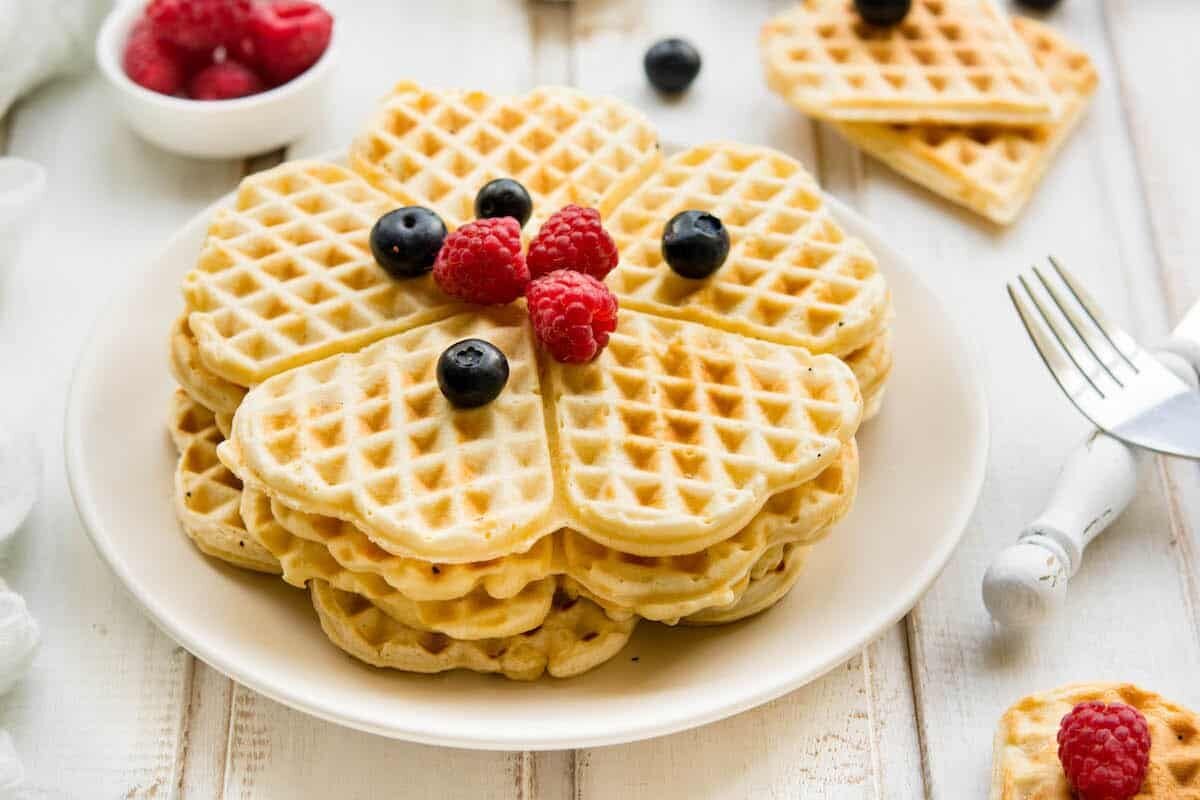Germany became an authority on making wafer recipes in the 18th century. They wrote recipes for coffee waffles and used brewer’s yeast for waffles, cardamom and many other ingredients.
Waffles don’t have an exact history. They date from the time of the ancient Greeks and were called Obelios. The spread of Christianity by the Crusaders helped the waffle recipe reach other countries where variations of the waffles depended on the local ingredients available.
In the 17th and 18th centuries, chocolates were added to the wafer mix. Between the 18th and 19th centuries, waffles became very popular with the middle class. In the 19th century, the readily available beet sugar meant that candy, chocolates, and other pastries contributed to the demise of the waffle. Before the turn of the 20th century, waffles were largely forgotten in France, with the exception of a few oublie manufacturers.
Even so, waffles became popular in America in the 1950s. If you’ve seen Stranger Things, you may have heard of the brand. Frozen waffles intended for precooking were marketed under the name Eggos.
After the 1950s, Belgian waffles became increasingly popular at trade fairs in the United States. Although the waffles have been forgotten, the original 18th and 19th century versions are still sold in areas of Northern Europe.
Waffles are amazing when they have various additives on them. Wonder Waffle has at least 10 items on the menu that are all about waffles.
Here are 11 variations of waffles from around the world.
Contents
1. American waffles.
American waffles are denser and thinner than their European counterparts. Waffles are breakfast items in the USA and can be garnished with chocolates, strawberries, fruit and syrup.
2. Bergische Waffeln.
These heart-shaped waffles come from the Berg district. They are crispy and have less volume than Belgian waffles. These waffles are served with cherries, cream and, if it’s a Sunday snack, rice pudding.
3. Brussels waffles.
These waffles are also lighter than Belgian waffles due to the different batter mix. The Brussels waffles were popularized by two chefs named Cauderlier and Consael, despite the pre-existing recipe. The original recipe was written by a man named Dacher. Brussels waffles can be topped with whipped cream, berries or chocolate syrup.
4. Belgian waffles.
Belgian waffles are a variation on the North American waffle. The defining characteristic of a Belgian waffle is usually the cooking tools used. If the indentations are 1.5 inches deep, any wafer mix can basically be called a Belgian waffle. Belgian waffles get their name from Bel-Gem waffles that were presented at a fair (the exact same fair that waffles became popular again) by a man named Maurice Vermesch. Maurice was from Brussels, Belgium.
5. Flemish waffles.
This waffle is northern France’s specialty. Flemish waffles are also found in areas of western Belgium. The recipe was made by Louis-Auguste de Bourbon in 1740. The waffle was made from flour, salt, milk, egg white and butter. The resulting waffles were served with sugar and orange blossom water, the latter being popular in the 17th century.
6. Campinoise pancakes.
Galettes Campinoise or Kempense Gatten are waffles that are harder and more brittle. They resemble shortbread cookies when they melt in your mouth.
7. Waffles.
These waffles from Italy are not necessarily sweet. They don’t have eggs or milk, but they are light and crispy. Gofre waffles can be sweet or savory – this means they can be paired with other local dishes.
8. Hong Kong Style.
This is the first non-European waffle on the list. Hong Kong-style waffles are larger and served in quarter-slices. Instead of whipped cream or fruit, these waffles are coated with peanut butter, butter, and sugar. A lot of egg yolk is used in making the waffles.
9. Gapit Cake.
While technically not a waffle, this West Java dry snack is made using the same principles for cooking a waffle. The flour it is made from is tapioca. The snack is available in different flavors. If most European waffles use orange blossom water, the Kue Gapit uses coconut water instead.
10. Liège waffle.
The Liège waffle is the heavier, sweeter and tougher version of a Belgian waffle. The other name is Jagdwaffeln and is the most common type of waffle in Belgium. In the United States, Liège waffles are marketed under the name Waffle Cabin, which can be found in the northeastern United States.
11. Pandan waffles.
The last Asian waffle entry on our list. This Vietnamese creation is similar to other types of waffles, except that the resulting product has a slight green tinge to it. The pandan flavor is used instead of vanilla and coconut milk, which replaces normal cow milk. This snack is popular with Vietnamese children. Pandan waffles are usually served without any other toppings as they taste great on their own.
